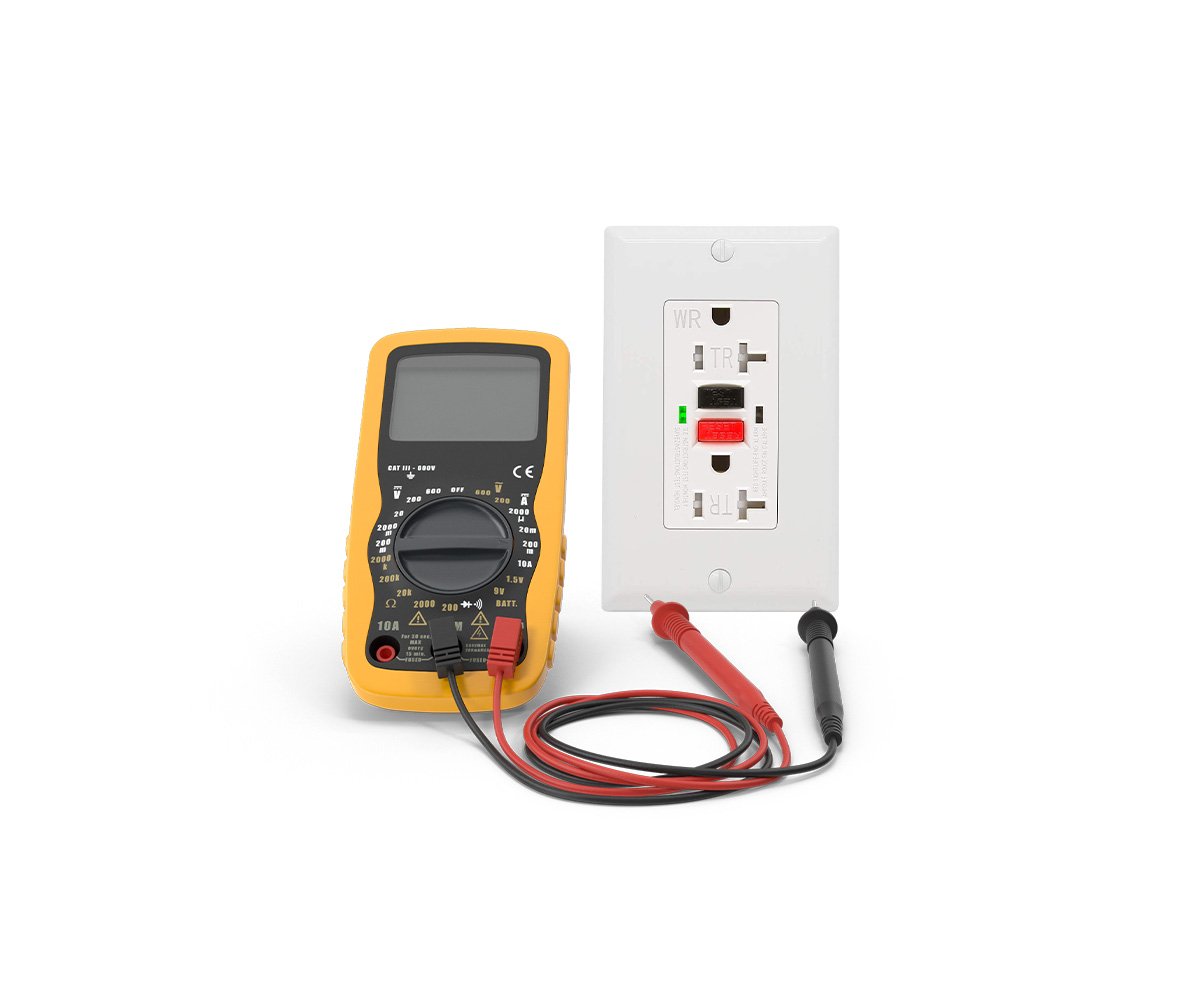Six Things Your Electrician Wishes You Knew
1. GFCI’S NEED TO BE TESTED MONTHLY
First off, if you’re asking what a GFCI is, let’s go over the basics. You know that funny looking rectangular plug with the two buttons in the middle? Yup, that one.
The National Electrical Code states they need to be anywhere within 6 ft of water. Meaning if you take a piece of string and stretch it from any edge of your sink basin, washing machine connection, toilet, etc. you get the idea. It goes even further.
did you know?
GFGI outlet stands for Ground Fault Circuit Interrupter.
Any countertop requires GFCI protection even if there is no water present. It sounds like they finally figured out we water plants, boil tea, and crack open beers with friends about anywhere there is a flat surface. These life safety devices are required by their manufacturer's instructions to be tested once a month.
Why? Believe it or not, they go bad, and the only way to know is to test them. Just because the plug is still putting out power does not mean it is protected. We get many service calls where the GFCI is the culprit. It may be powering your hair dryer, but the internal features have failed and it’s not sending power downstream to that other bathroom that the plug hasn’t worked in for months. Put it on your calendar with your smoke detectors and test them. It’s well worth the time invested.
2. SMOKE DETECTORS EXPIRE.
You know those old, yellowed smoke detectors your aunt has in her living room that look so tacky? It’s not because that used to be the cool color, it’s because of the paint. The manufacturer's spray the device with an oxidizing compound that begins to yellow at the 8-to-10-year mark.
Which is exactly their life span. So, you guessed it. Almost all of us, and everyone you know have expired smoke detectors. We all try to get a few more years out of that couch, or that car, but for my money I’m not skimping on the only thing that’s going to wake me up during a fire.
3. YOU CAN’T JUST CHANGE A TWO PRONG PLUG TO A THREE PRONG.
This is a tail as old as time. We get called to fix a home inspection list. The house is under contract, and it closes next week so time is of the essence. The inspector used his little tester and for some reason all the 3 prong plugs are showing open ground. Which means there is no ground present. Now we get to explain to the sellers and potential buyers that this is not a cheap or easy fix. Not only that but every single plug is a fire hazard.
That third prong, or the mouth of the smiley face is actually for the ground wire, and by not having one connected, you are telling fault current it has place to go when it actually does not. There is an in-depth video on our YouTube page about this because it is such a prevailing issue in our area and I’m assuming all over the country.
There are several solutions to this from rewiring your entire house with proper cabling, or GFCI protecting each circuit from the source. For now lets just settle on leaving them two prong or calling your local certified electrician.
4. BLACK IS NOT ALWAYS HOT.
To the contrary, white is not always neutral. Have you ever tried replacing a broken switch by the front door only to get frustrated enough to call someone? You took pictures, you bought the same switch, you put the wires exactly how they were on the old one but nadda. The light will not work no matter how many times you flip it. We completely understand if you are comfortable enough to change your own plugs and switches and want to save a little money.
I grew up in a house where if you wanted to do anything you were going to figure it out. That’s just how it was. Completely understandable. This brings us to our second most common service call. Someone is sure they understand what they are doing but finally make the reluctant call to a professional.
Yes, lights themselves work off a hot and a neutral wire. But switching them is a whole different ball game. Sometimes the white is hot, sometimes the black is a traveler for a 3 way. Sometimes the black is a switch leg and the other black is now a neutral. If you are not familiar with these terms you are welcome to look up some basic electrical wiring guides, but I would not suggest changing your switches.
For that matter some of you with homes from the 1960’s have switched lamp plugs in the living room and it can get even trickier. You may want to save money elsewhere.
5. DO NOT REPEATEDLY TURN ON A TRIPPED BREAKER.
On a very regular basis, we are called to a home where they are having issues with power loss. “he counter top is tripping when we use the microwave and the toaster” or a winter version would be “ the bedroom power blows a lot when we use our space heaters “ These are two very common items we troubleshoot that are easy to spot the problem.
When they built your home in 1963, there were little to no appliances, so the entire kitchen was run off of one 15-amp circuit. The microwave alone draws 12 which is at max already. For the space heaters it’s roughly the same. No houses 15-amp circuit was made to run 2 to 3 space heaters at 11 amps each. In fact, I would be doing an injustice if I didn’t tell you space heaters are a huge fire hazard and the leading cause of wintertime emergencies.
Either way we notice the plugs are slightly blackened and melted from overheating, and the breaker is loose and barely working. I can sympathize if you are cold, or wanting that hot pocket late at night, but please do not keep resetting the breaker. It gives you all the signs you need that there is a major problem. The breaker is tripping because it is overheating.
It protects the wire which is literally at the point of melting. The breaker itself works off magnets and springs, which wear more every time they are reset. Let’s just play it safe. If the same breaker trips more than two times in one year, call it in.
6. Flip covers do not protect anything.
You know those gray flip covers on the outside of your home? The ones you can pull back and they snap closed, if they still work. They only protect the plug while the cover is closed. So, as you can imagine, when you go to plug in your extension cord, the cover is open. Leaving the plug exposed to the elements. Now imagine this during the Christmas season when it is open for a month or more during freezing rain and snowfall.
We’re really hoping the plug is properly GFCI protected to start with. Then we highly suggest getting yourself what is called an “in use cover “and even better, an “extra duty in use cover “ This is what the code requires for plugging in while in a wet location. This somewhat bulky cover, also called a “bubble cover “provides protection by allowing you to close it while the cord is plugged in.
Therefore, the rain and snow hit the closed cover and falls harmlessly to the ground instead of inside your receptacle. Also think how much longer your plug will last without being pelted by rain and baked by the sun. Well worth the investment.




